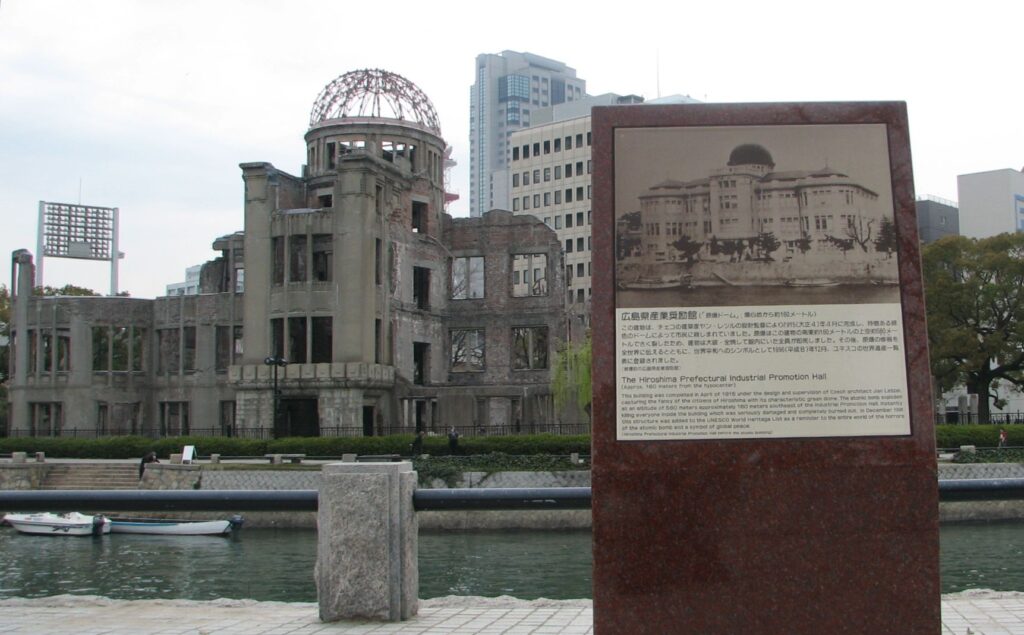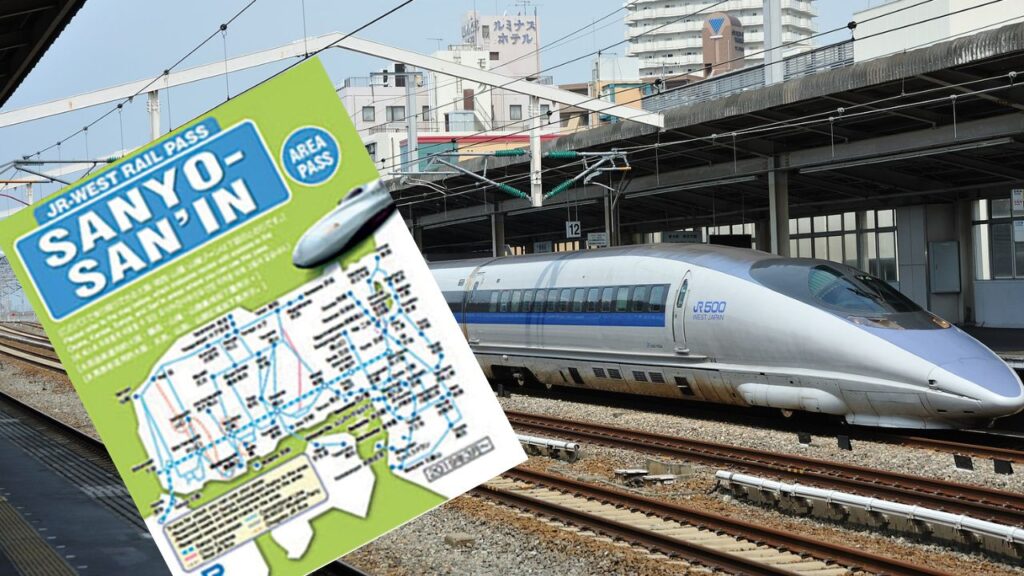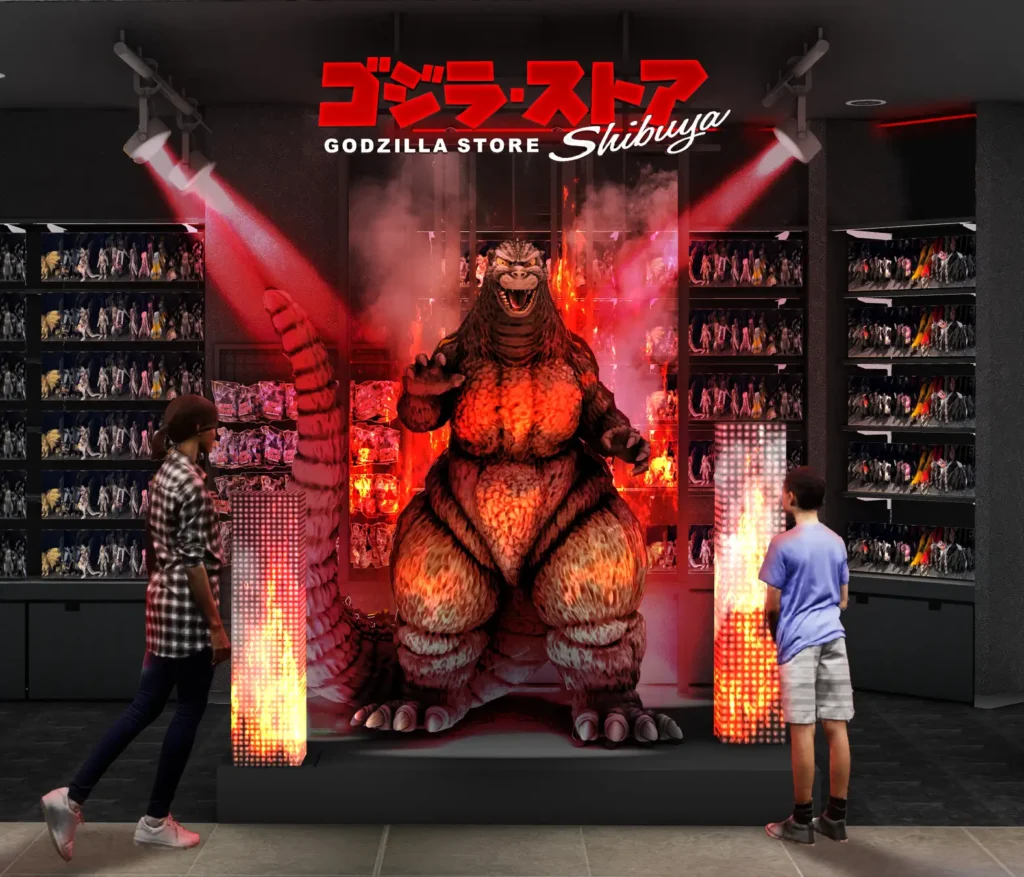Top 10 Retro Hot Springs In Japan Revealed
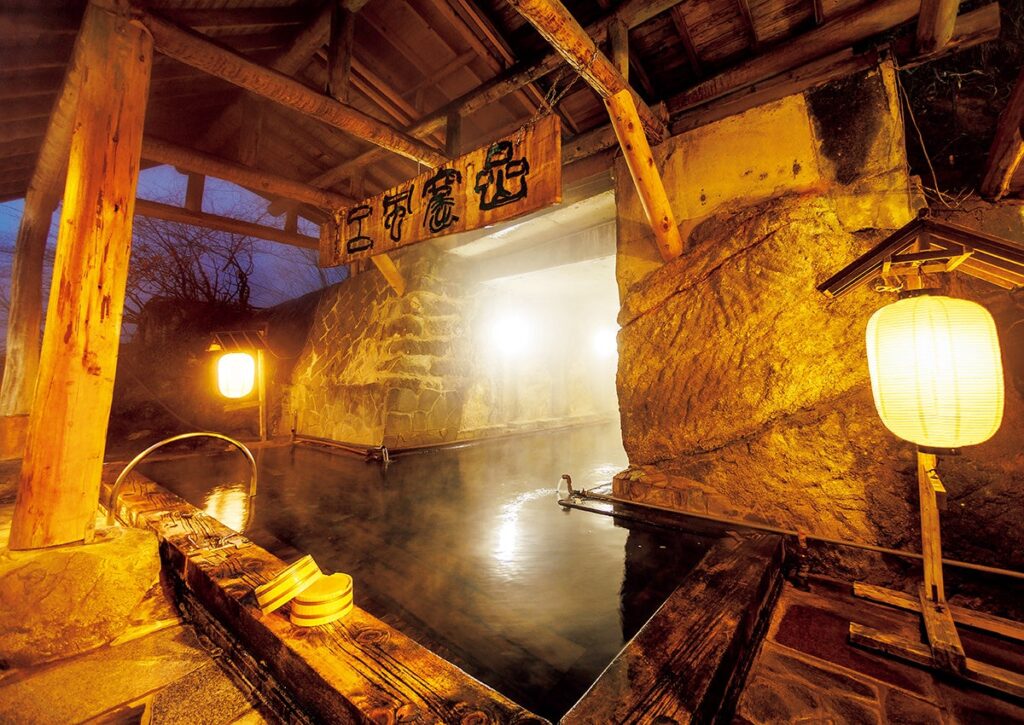
Japanese travel magazine Jalan has announced the Top 10 “retro hot springs” in the country.
When people in Japan talk about retro hot springs, they typically mean hot spring baths (onsens) that are at least several decades old but in some cases they can be several centuries old.
The best retro onsens give visitors the feeling of stepping back in time to the period the onsen first opened, whether it’s mid-20th century Japan, the Edo period or even earlier.
Jalan surveyed over 1,000 people to find out which retro onsens are the best to visit according to the Japanese public.
So, which onsen won the title of “Best retro hot spring in Japan”?
10th place: Ibusuki Onsen Muranoyu Onsen (Kagoshima Prefecture)

Located in a residential area, this public bath was founded in 1881. Its charm lies in its sober atmosphere, with its bathtubs, exposed beams, and historic bathrooms.
It has four springs of different temperatures, including one that springs from under your feet, and maintains the traditional method of mixing these to adjust the temperature, attracting hot spring lovers from all over the country.
The women’s bath is a wooden building with two baths in the center, one with hot water and one with lukewarm water, which can be enjoyed alternately.
9th place: Shionoha Onsen Yamabatoyu (Nara Prefecture)
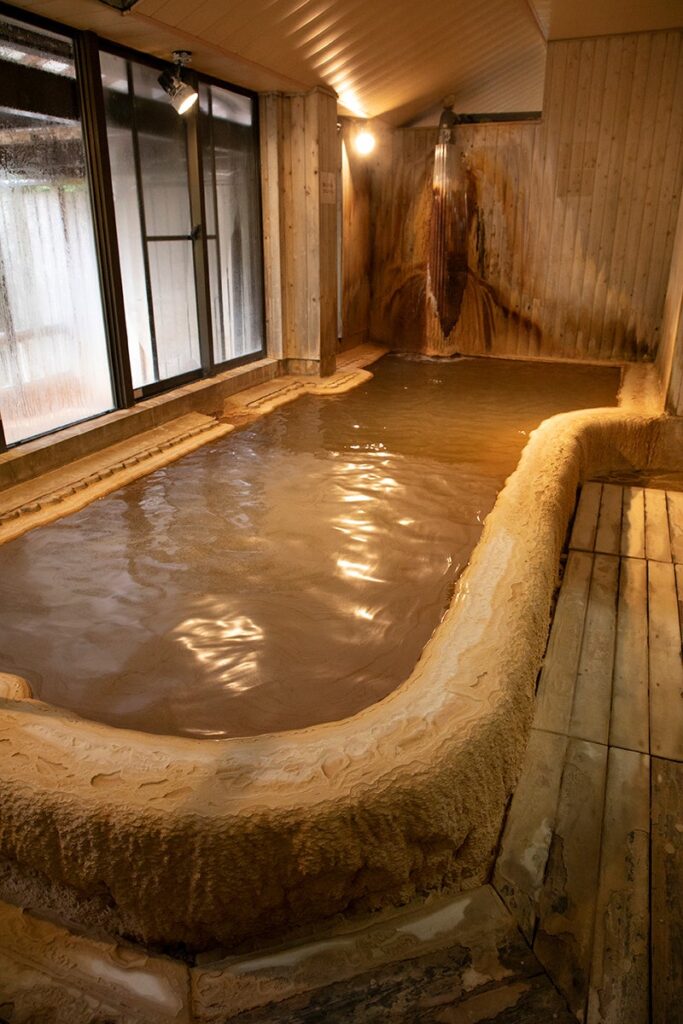
This hot spring facility was founded in 1973 and is located on the shore of a dam lake in Okuyoshino.
500 liters of hot spring water gushes out every minute, and the hot spring ingredients pile up in the bathtub like tree rings.
The spring temperature is 39.6°C, so it is heated in cold seasons, but no water is added and the water is left to flow freely. From the open-air bath carved out of a zelkova stump, you can see the seasonal nature and Osako Dam, and it is recommended for enjoying a long, leisurely bath in the slightly warm water.
8th place: Tsuta Onsen (Aomori Prefecture)
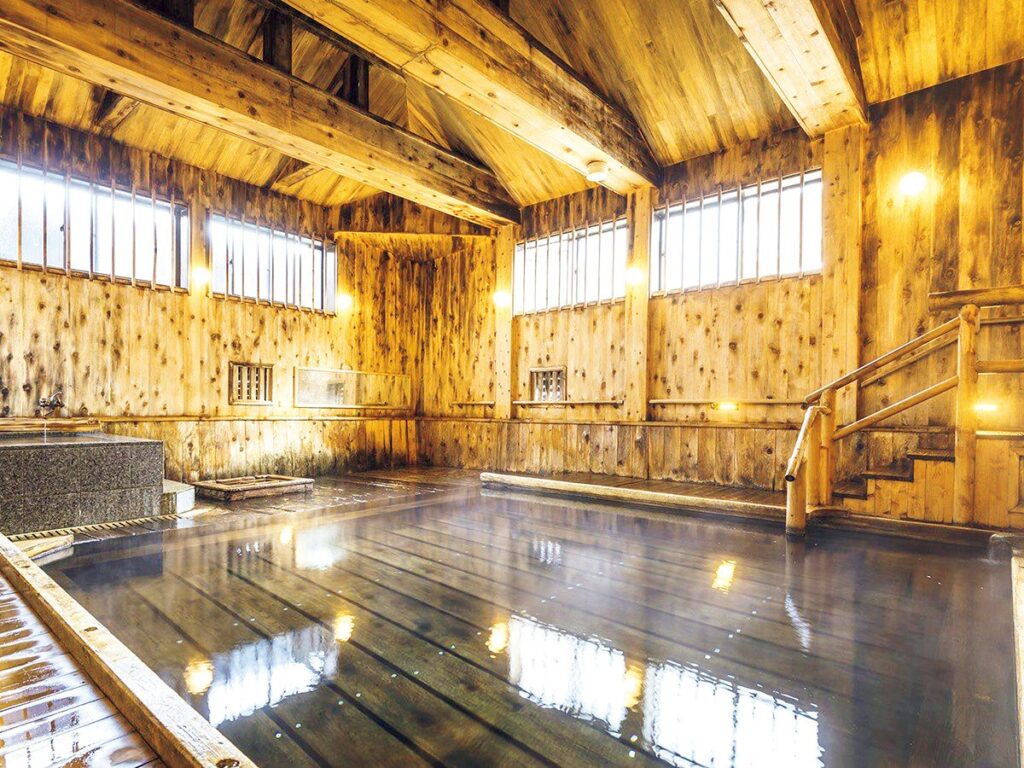
Tsuta Onsen, which is said to have been opened in the Heian period, has a bathtub located above the source of the spring, and is characterized by 100% “spring” water that does not come into contact with the air from the bottom of the bathtub.
The small and spacious “Kuyasu no Yu” not only allows you to feel the feel and efficacy of the freshly brewed water, but also has a charming, quaint atmosphere that will make you gasp in admiration the moment you open the door to the bathtub.
7th place: Yumoto Fuboukaku (Miyagi Prefecture)

This inn was patronized by successive feudal lords of the Date clan. It is said that Date Masamune stayed there about 417 years ago.
Of the six baths, the stone bath “Oyu Kinsendo,” where Date Masamune is said to have bathed, was built by 30 craftsmen and uses 100% natural, colorless, odorless hot spring water. Another must-see is the Aone Palace on the premises, which displays documents related to the Date clan.
6th place: Kanaya Ryokan (Shizuoka Prefecture)
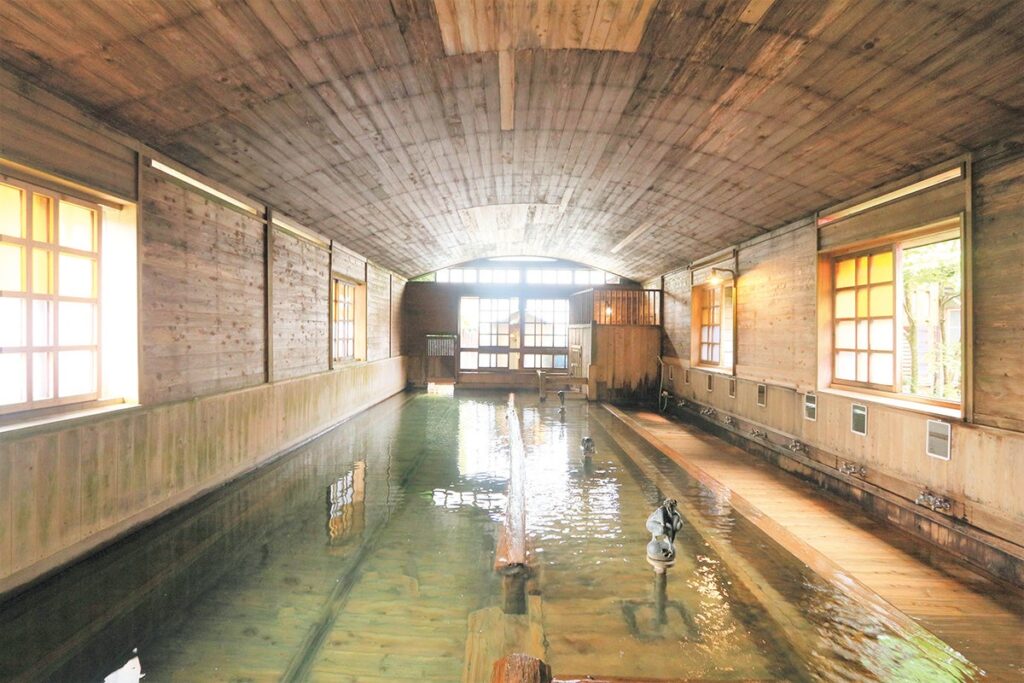
Built in 1915, this Senninburo (thousand person) bath is one of the largest baths in Japan, measuring 15m in length and 5m in width, made entirely of cypress wood, and is generously filled with 100% natural hot spring water.
The temperature of the water drops as you move away from the spout, so it is recommended that you soak in a spot with just the right temperature. In winter, steam rises from the open, arched ceiling of the wooden building, creating a fantastic atmosphere.
5th place: Shin-Tamagawa Onsen (Akita Prefecture)
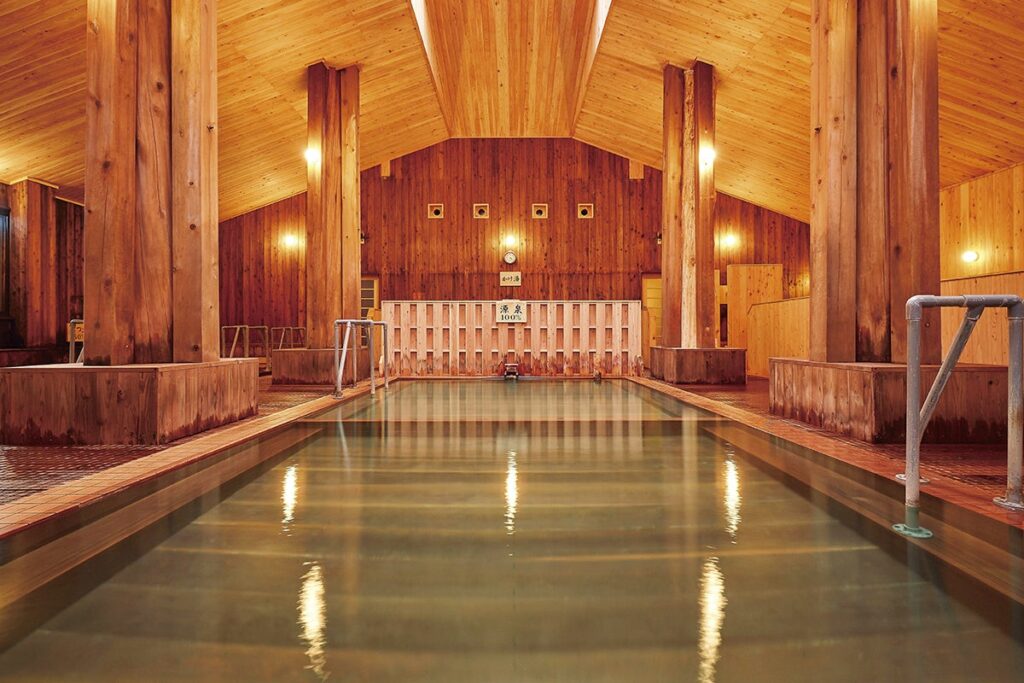
The hot water is drawn from the source of Tamagawa Onsen, which was discovered in the 1600s, and gushes out with a roaring sound, boasting a flow rate of 9,000 liters per minute, one of the largest for a single source in Japan.
The spring is acidic with a pH of 1.2, said to be more than twice as acidic as a lemon, and is mainly composed of hydrochloric acid, which is rare worldwide.
It has a strong tingling sensation, so much so that even adults can feel pain if they soak for a long time.
The large public bath has 14 types of bathtubs, including milder ones, so you can choose one that suits your physical condition.
4th place: Katakurakan (Nagano Prefecture)
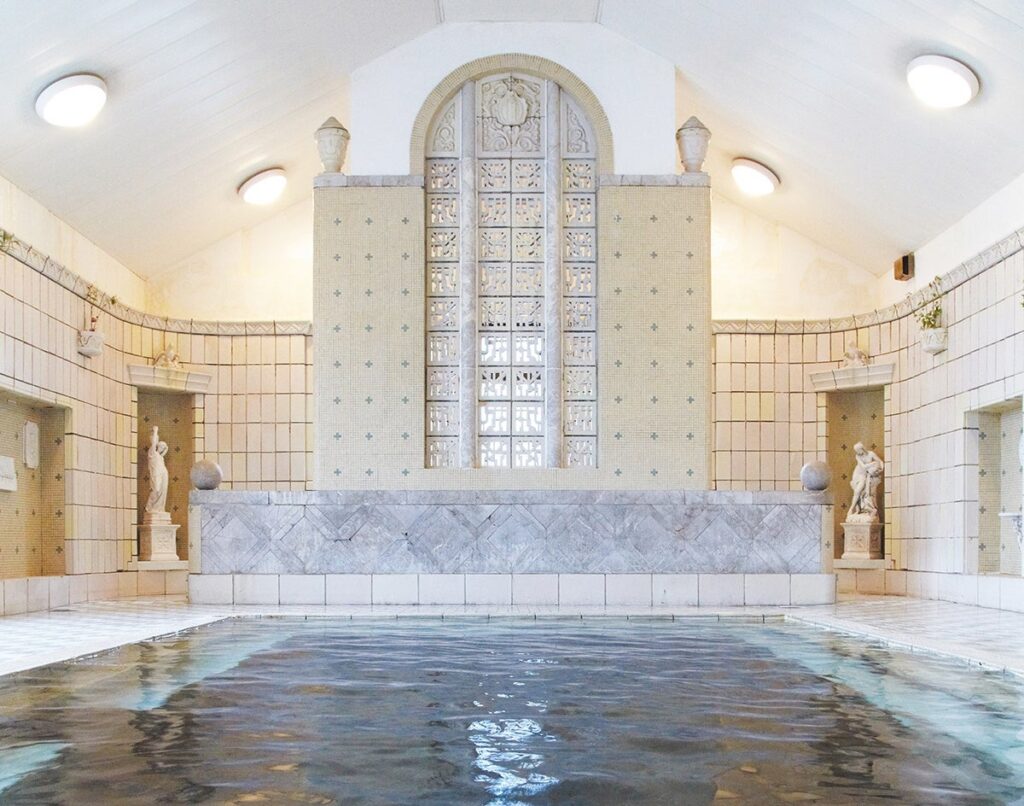
This hot spring resort was built as a local welfare facility by the Katakura Zaibatsu, which enjoyed success in the silk industry from the Taisho to the early Showa periods.
The architecture, which incorporates Western styles and designs, was designated an Important Cultural Property of Japan in 2011 due to its high cultural value.
There are plenty of things to see, such as the marble bathtub measuring 7.6m in length and 4m in depth, and stained glass, and you can almost feel the romance of ancient Rome’s baths.
3rd place: Kawakami Onsen (Fukushima Prefecture)

This inn was founded in 1615, and the 15th generation owner came up with the idea to create a one-of-a-kind bath, which is half cave, half open-air.
It took a craftsman a year and a half to hand dig it, and the 0.85m deep bath is made of Aomori Hiba wood.
It can be enjoyed by both men and women on alternate days, along with the public bath in the building.
2nd place: Kosoyu, Yamashiro Onsen (Ishikawa Prefecture)

This public bath was restored in 2010 on the site of a public bath that first opened during the Meiji period.
Not only does it have a beautiful plain wood exterior, but the Kutani ware tiles on the floors and walls also recreate the atmosphere of the time, and although there is no shower, it is possible to bathe in the style of the time by pouring the water over yourself.
Bright light pours in through the colorful stained glass in the bathroom, bringing out the vivid colors in the bathtub and creating a retro-modern space.
1st place: Hoshi Onsen Chojukan (Gunma Prefecture)
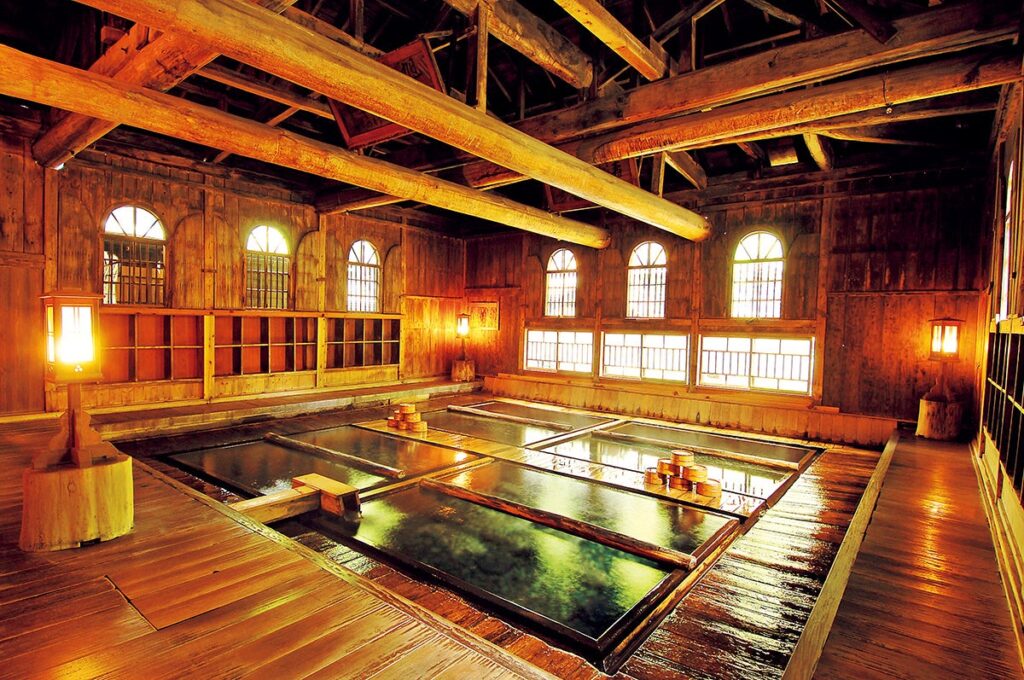
This large public bath, built in 1895, was the first to be certified by the Society for Preserving Secret Hot Springs of Japan.
The Rokumeikan-style “Hoshi-no-yu” and “Choju-no-yu” still retain the atmosphere of the Meiji era, with the source of the hot spring located directly above the bedrock, and 100% fresh hot water constantly bubbles up from between the boulders that cover the bathtub.
At “Hoshi-no-yu,” which features thick beams and Western-style arched windows, you can soak in the beauty of the architecture from about 130 years ago.
Source: Official Website
© Recruit Co. Ltd

This post may contain affiliate links, and Essential Japan may earn a commission if you purchase through them.


